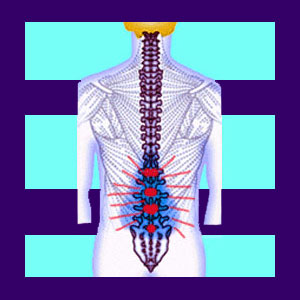
Acetaminophen for back pain is a very common over the counter remedy taken by millions of patients for symptomatic relief. Acetaminophen is actually the most popular pain reliever used worldwide. Acetaminophen is also called paracetamol and is used as a pain reliever for mild to moderate symptoms from a variety of causes. Paracetamol is also known for being the choice of patients who demonstrate sensitivity to aspirin.
This editorial examines the benefits and risk of acetaminophen, when used to treat a diversity of back pain conditions. We will discuss how the drug is utilized and provide important information that all users should know.
Varieties of Acetaminophen for Back Pain
Acetaminophen is marketed under many popular brand names, as well as several generic names including: Tylenol, Anacin-3, Tempra, Datril, Acamol, Adol, Aldolor, Alvedon, APAP, Benuron, Biogesic, Buscapina, Cemol, Crocin, Dafalgan, Daleron, Depon, Dexamol, Dolex, Doliprane, Efferalgan, Gelocatil, Lekadol, Metacin, Pamol, Panado, Panadol, Panamax, Panodil, Paracet, Paralen, Paramol, Perdolan, Perfalgan, Pinex, Plicet, Reliv, Rokamol, Sara, and Tachipirina.
Acetaminophen is also available combined with other drugs in these common brand names:
When mixed with codeine: Co-Codamol, Tylex CD, Panadeine, Tylenol #1/2/3/4, Captin, Disprol, Dymadon, Fensum, Hedex, Mexalen, Nofedol, Paralen, Pediapirin, Perfalgan, and Solpadeine.
When acetaminophen is mixed with oxycodone, it is called Percocet.
When acetaminophen is mixed with hydrocodone, it is called Vicodin.
Risks of Paracetamol for Back Pain
Paracetamol is not an anti-inflammatory back pain management drug and usually does not have adverse effects on the gastrointestinal tract. Very few patients have negative GI reactions when taking acetaminophen. Constant or long-term use has been linked to instances of liver damage in some patients.
Make sure to discuss any health problems or drugs you are taking with your doctor, before using Acetaminophen as part of your back pain treatment program. This will help to prevent problematic interactions with other pharmaceutical or herbal substances you may be using.
Acetaminophen is marketed under many popular brand names, as well as several generic names including: Tylenol, Anacin-3, Tempra, Datril, Acamol, Adol, Aldolor, Alvedon, APAP, Benuron, Biogesic, Buscapina, Cemol, Crocin, Dafalgan, Daleron, Depon, Dexamol, Dolex, Doliprane, Efferalgan, Gelocatil, Lekadol, Metacin, Pamol, Panado, Panadol, Panamax, Panodil, Paracet, Paralen, Paramol, Perdolan, Perfalgan, Pinex, Plicet, Reliv, Rokamol, Sara, and Tachipirina.
Acetaminophen is also available combined with other drugs in these common brand names:
When mixed with codeine: Co-Codamol, Tylex CD, Panadeine, Tylenol #1/2/3/4, Captin, Disprol, Dymadon, Fensum, Hedex, Mexalen, Nofedol, Paralen, Pediapirin, Perfalgan, and Solpadeine.
When acetaminophen is mixed with oxycodone, it is called Percocet.
When acetaminophen is mixed with hydrocodone, it is called Vicodin.
Risks of Paracetamol for Back Pain
Paracetamol is not an anti-inflammatory back pain management drug and usually does not have adverse effects on the gastrointestinal tract. Very few patients have negative GI reactions when taking acetaminophen. Constant or long-term use has been linked to instances of liver damage in some patients.
Make sure to discuss any health problems or drugs you are taking with your doctor, before using Acetaminophen as part of your back pain treatment program. This will help to prevent problematic interactions with other pharmaceutical or herbal substances you may be using.





